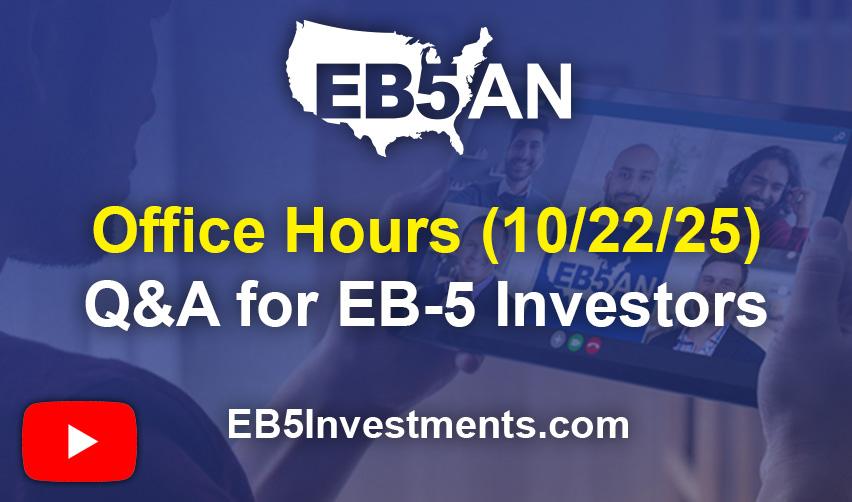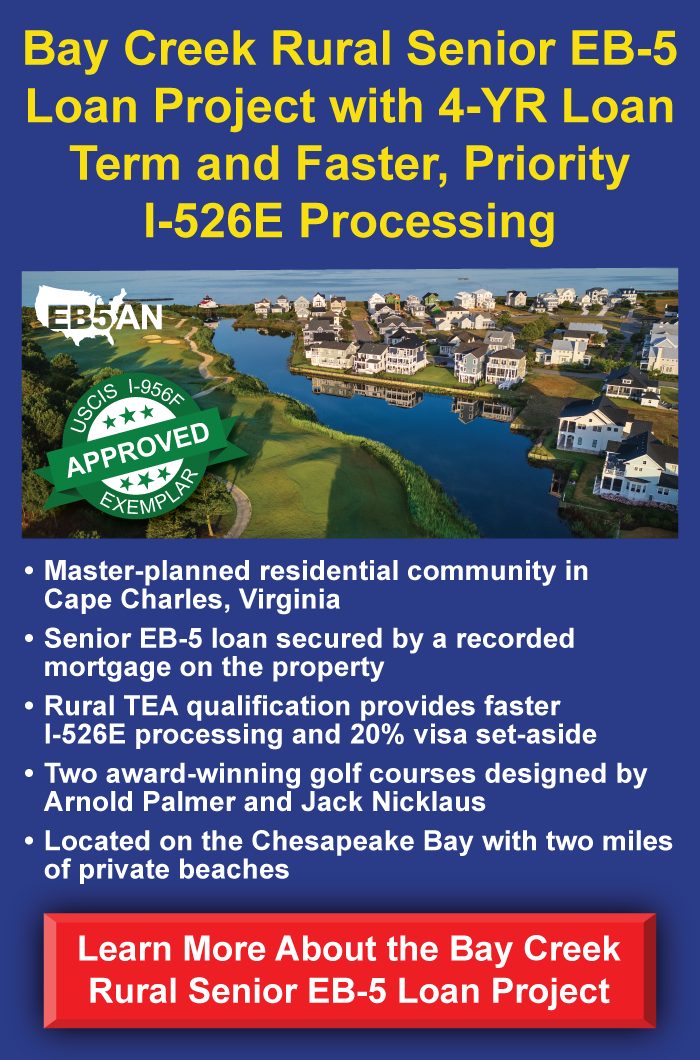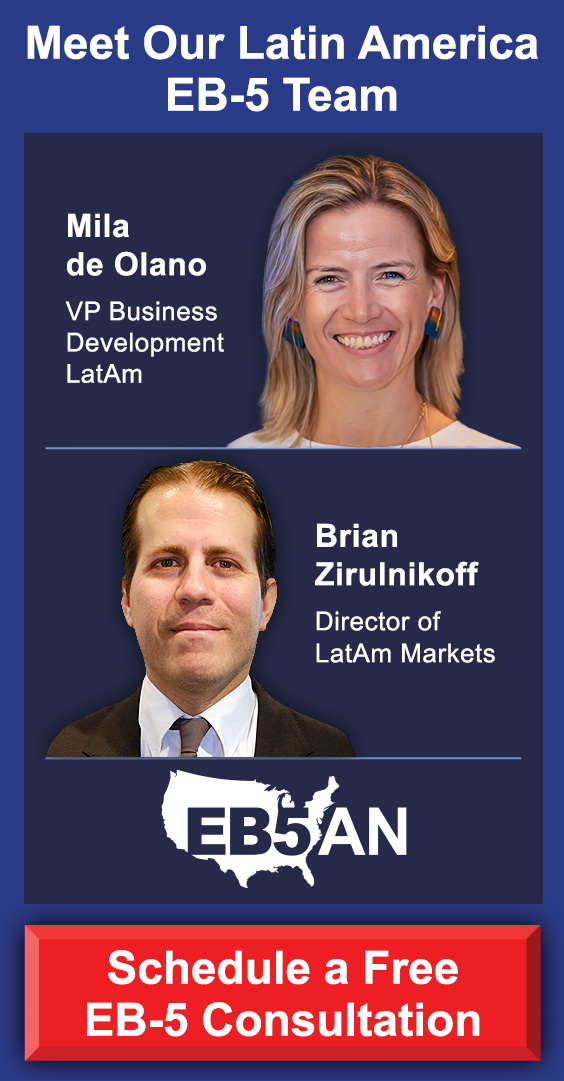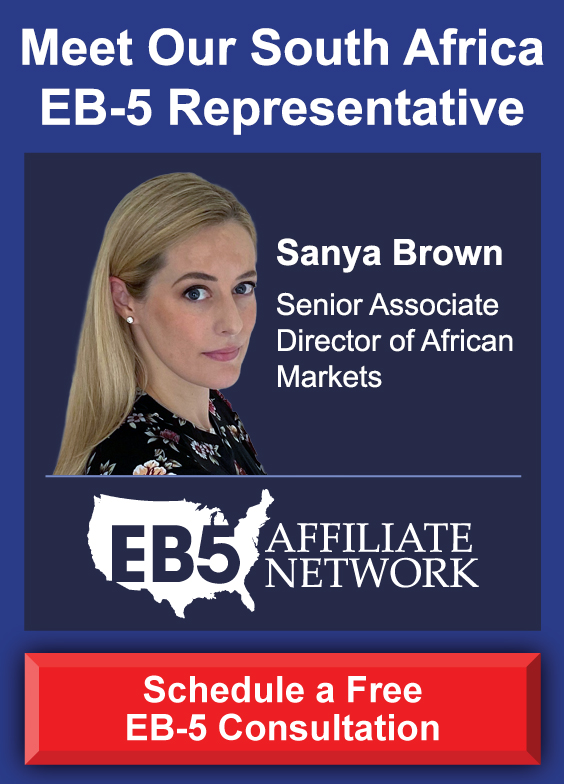EB5AN’s “Office Hours” Q&A sessions have become a trusted resource for EB-5 investors who want real answers directly from industry experts. Hosted by EB5AN’s executive team, these live events provide a candid forum to discuss current EB-5 trends, policy updates, and investor questions in real time.
Understanding the Differences Between Rural and Urban Projects
Preparing Early With the Right Immigration Attorney
Lawful Source of Funds: Lessons From the Zhang Case
Advantages of Filing While Already in the United States
The Outlook for Rural and High-Unemployment Projects
Priority Processing and the Need to Act Promptly
Keep Learning With EB5AN’s “Office Hours” Q&A
Watch October 22 Session Highlights:
The October 22 event brought together EB5AN Managing Partners Sam Silverman and Mike Schoenfeld, along with Senior Vice President Ahmed Khan, for an engaging discussion on some of the most important issues currently shaping the EB-5 program. The conversation covered a wide range of investor-focused topics—from choosing between rural and urban projects to understanding how to prove lawful source of funds, concurrent filing benefits, and attorney selection.
Understanding the Differences Between Rural and Urban Projects
Sam Silverman opened the session with one of the most common investor questions: What are the key differences between rural and urban EB-5 projects?
He explained that while the minimum investment amount remains the same at $800,000 for both high-unemployment (urban) and rural TEA projects, the biggest difference lies in processing timelines.
“Rural projects receive priority processing under the EB-5 Reform and Integrity Act,” Sam noted. “We’re seeing more than 80% of rural filings approved within 12 months, based on our recently published data of over 600 approvals.”
Urban projects, meanwhile, typically take longer to reach approval but often come with shorter loan terms. As Sam summarized, “It’s really about priorities—do you want the Green Card a bit faster, or your capital back a bit faster? That’s the first decision to make before diving deeper into individual project options.”
Preparing Early With the Right Immigration Attorney
Mike Schoenfeld emphasized the importance of starting early with an experienced immigration attorney. He explained that the source of funds documentation is almost always the biggest bottleneck in the EB-5 process—something investors often underestimate.
“Even if all your income is from the U.S., it can still take one or two months to collect everything your attorney will need,” Mike said. “So begin working with an attorney well before choosing a project. That’s the most reliable way to stay on track with your filing and adjustment of status.”
Lawful Source of Funds: Lessons From the Zhang Case
Ahmed Khan provided legal insights into one of the most frequently asked topics: how investors can demonstrate the lawful source of their EB-5 funds, particularly when using loans.
Referencing the Zhang v. USCIS decision, Ahmed explained how the court confirmed that unsecured loans can be used for EB-5 investments, as long as the money comes from lawful sources. “If a family member, a friend, or even an employer gives you a loan, that’s permissible,” he said. “But USCIS will look closely at two things: proving the lawful source of the loaned funds, and showing that the loan is structured like a real loan—with proper documentation, interest rate, and collateral where applicable.”
He also reminded attendees that even informal personal loans must meet federal requirements, including minimum interest rates and documentation that proves the transaction is legitimate and transparent.
Advantages of Filing While Already in the United States
For investors already living in the U.S. under another visa status, Ahmed highlighted the unique benefits of concurrent filing—a process that allows investors to apply for adjustment of status (AOS) at the same time as their I-526E petition.
“Concurrent filing effectively gives you a new status while you wait for your Green Card,” he said. “You’ll receive a work permit and travel authorization that last until your Green Card is issued, so you don’t have to depend on an employer or student status anymore. You can work anywhere, start your own business, or even take time off completely.”
He noted that this flexibility is especially valuable for applicants in the U.S. on temporary visas like F-1, H-1B, or L-1, and emphasized the importance of acting soon before potential visa retrogression limits concurrent filing opportunities.
The Outlook for Rural and High-Unemployment Projects
Ahmed also discussed the ongoing differences in processing times and visa availability across project categories. He reiterated that rural EB-5 petitions continue to see faster adjudication, while high-unemployment projects often offer stronger financial terms and more familiar urban settings.
“There’s no one-size-fits-all answer,” he said. “Rural projects remain the fastest path to a Green Card, but high-unemployment projects can be appealing for their financial advantages. The key is to make an informed decision early, while concurrent filing options are still open.”
Ahmed also reassured investors that the recent government shutdown did not impact EB-5 processing, since USCIS’s Immigrant Investor Program Office operates entirely through filing fees and remains self-funded.
Priority Processing and the Need to Act Promptly
Wrapping up the event, the speakers reinforced the value of making timely decisions. With more filings coming in each month and rural visa demand steadily rising, Ahmed noted that the window for the fastest approvals may not last forever.
“Rural projects are being processed roughly twice as fast as urban ones,” he said. “We’re seeing about 80% of rural investors approved within a year, compared to 16 to 18 months—or more—for high-unemployment projects. So now really is the best time to get started.”
Watch the Full October 22 Session:
Keep Learning With EB5AN’s “Office Hours” Q&A
EB5AN’s “Office Hours” Q&A sessions reflect our firm’s commitment to transparency, education, and direct investor engagement. Participants have the opportunity to learn from senior EB-5 professionals and get clear answers tailored to their situation.
If you missed the October 22 Q&A, you can watch the recap videos above or register for the next live event. Investors who can’t attend are also encouraged to book a one-on-one call with the EB5AN team to discuss available projects and filing strategies.







